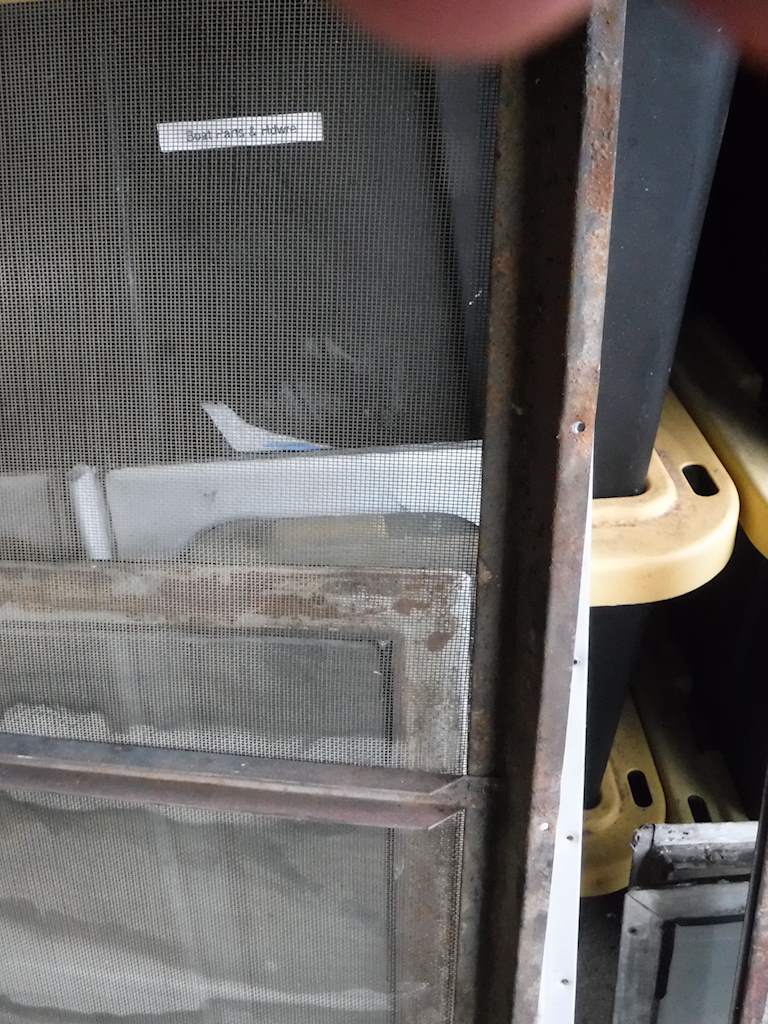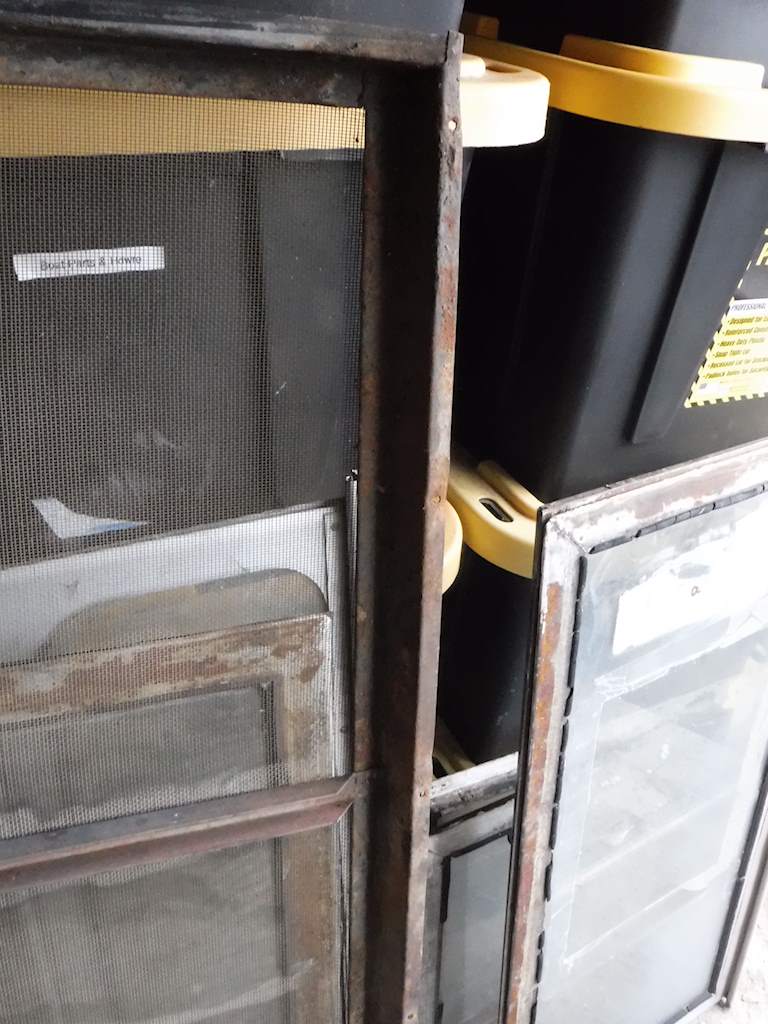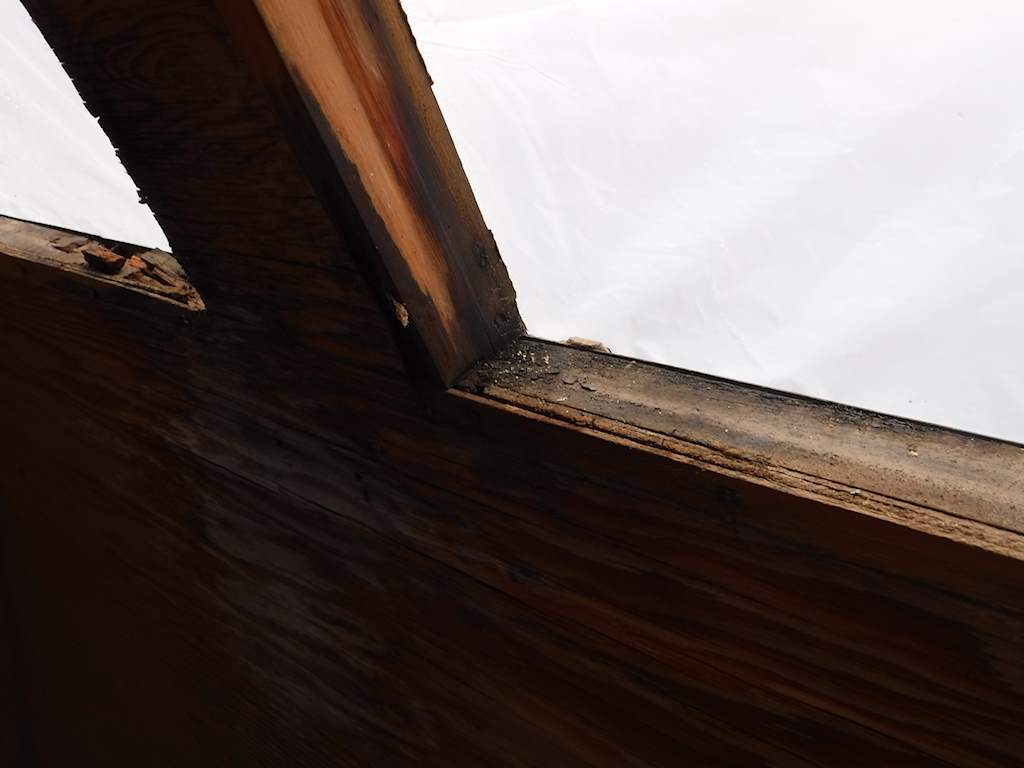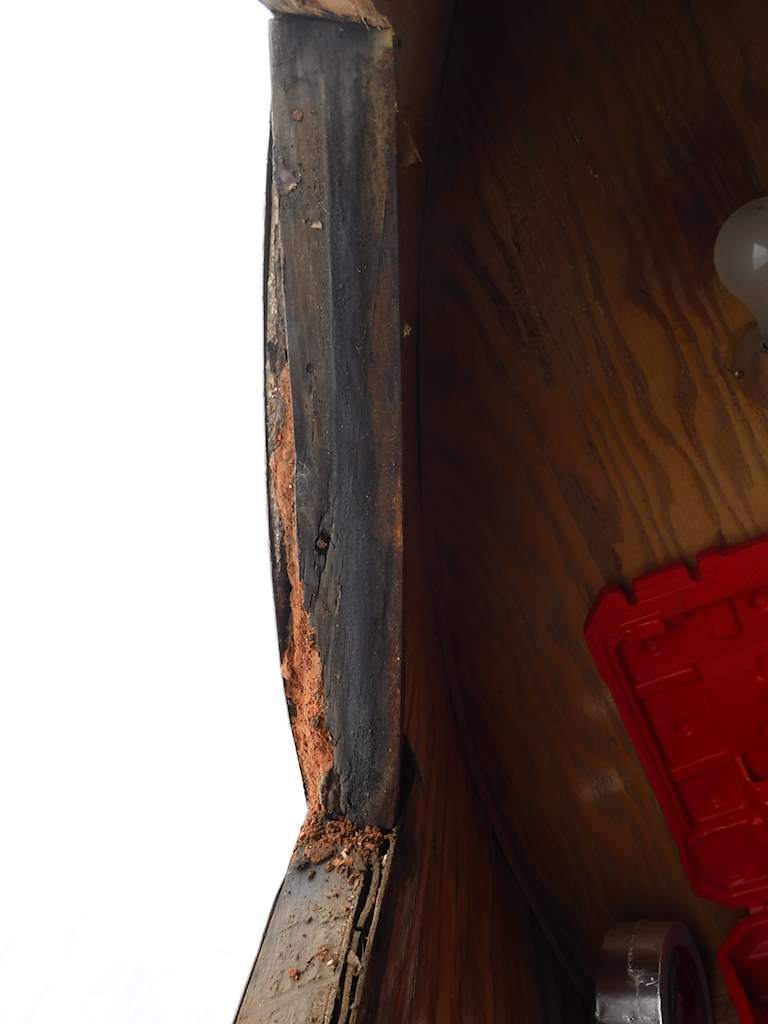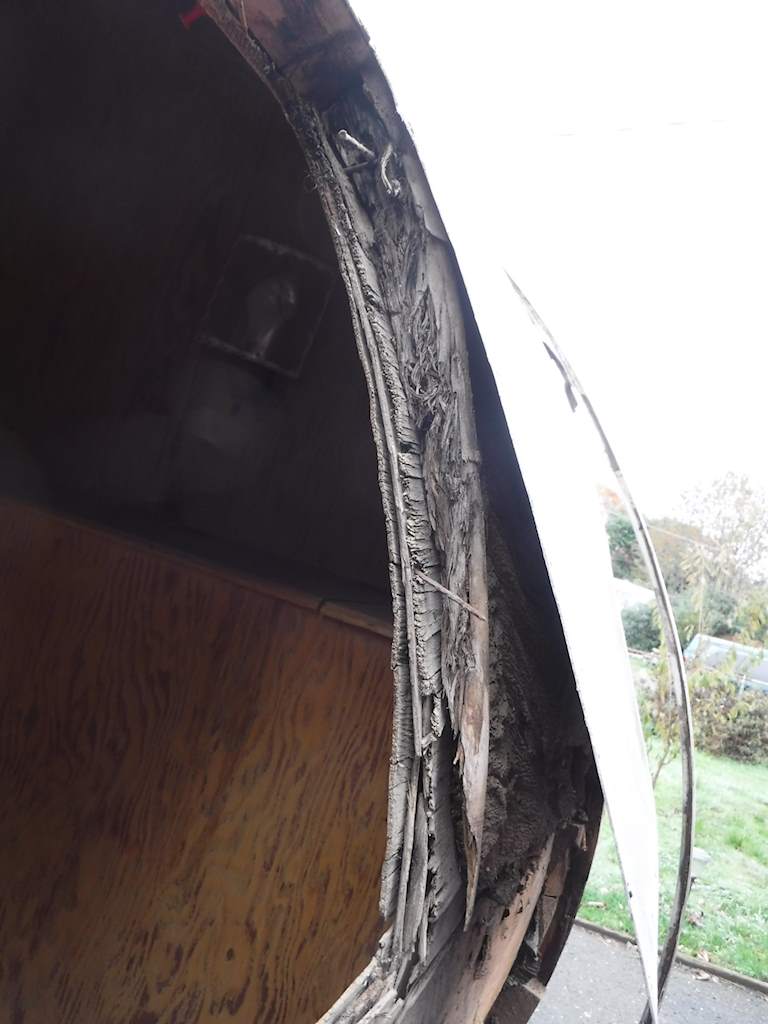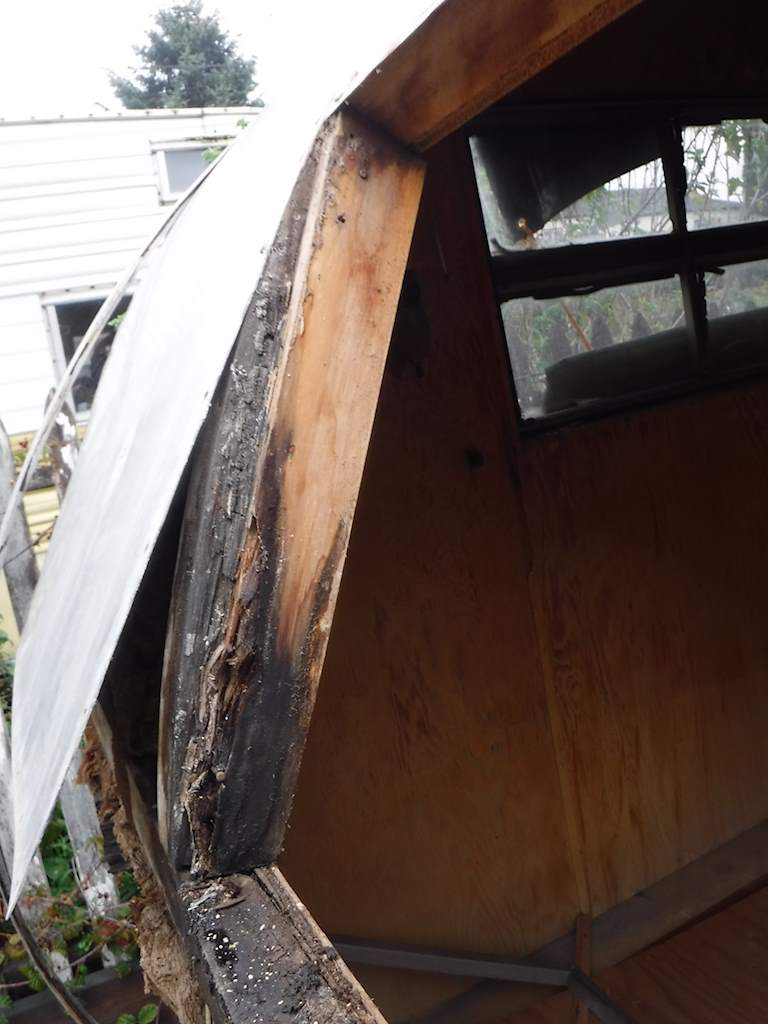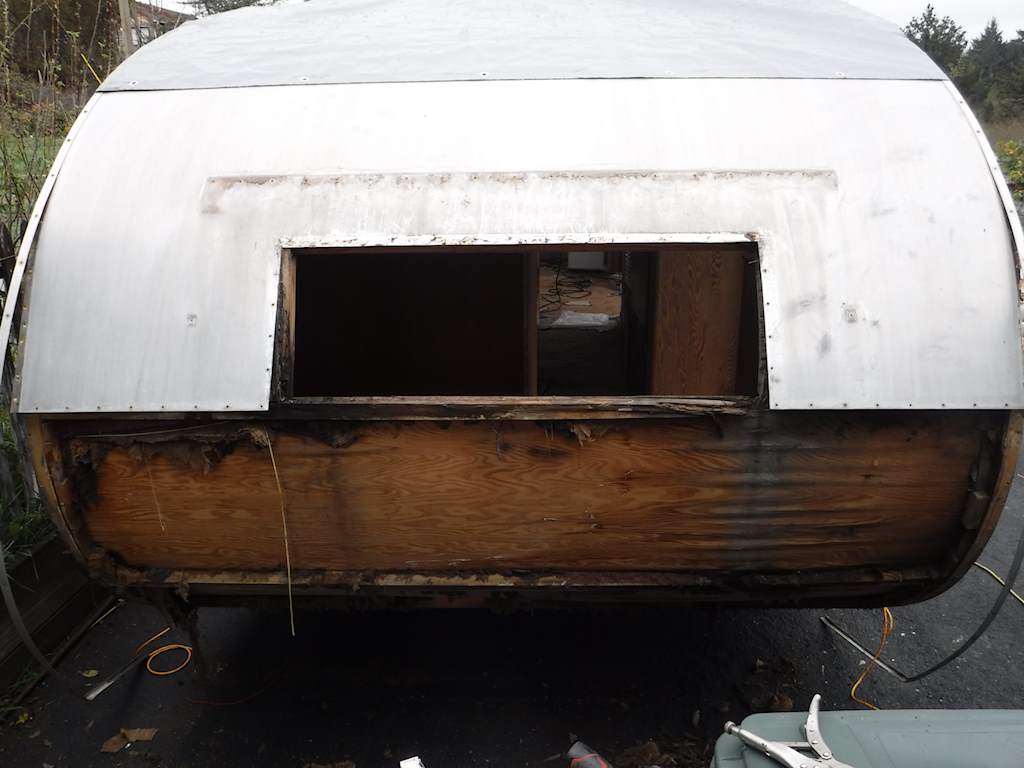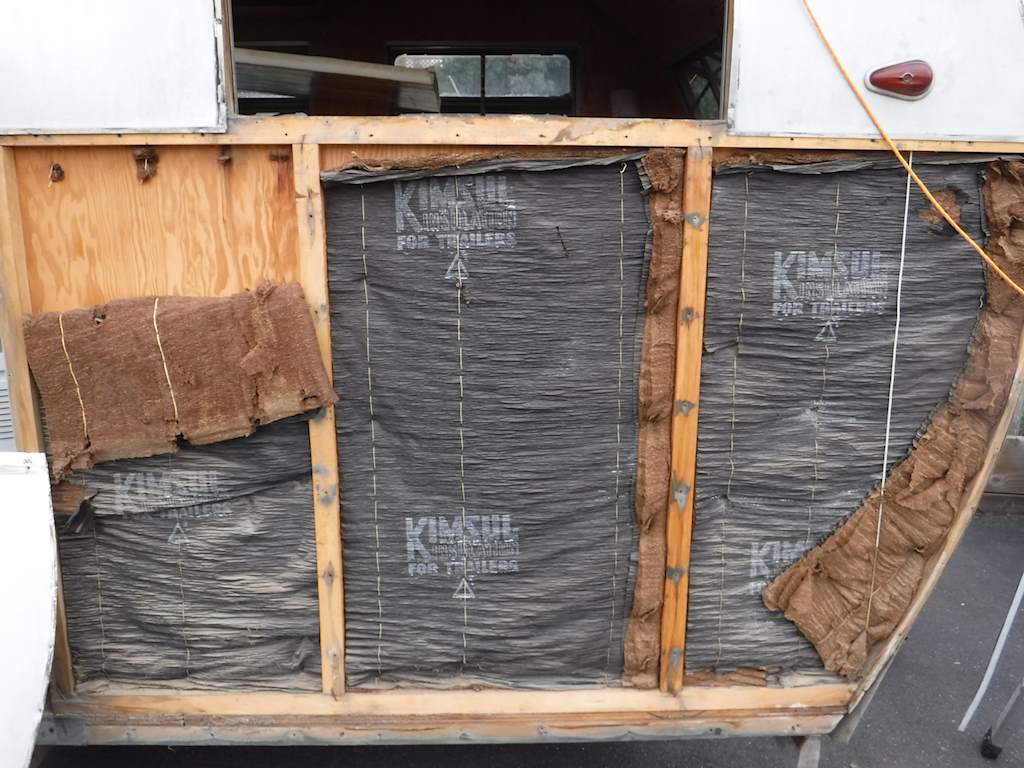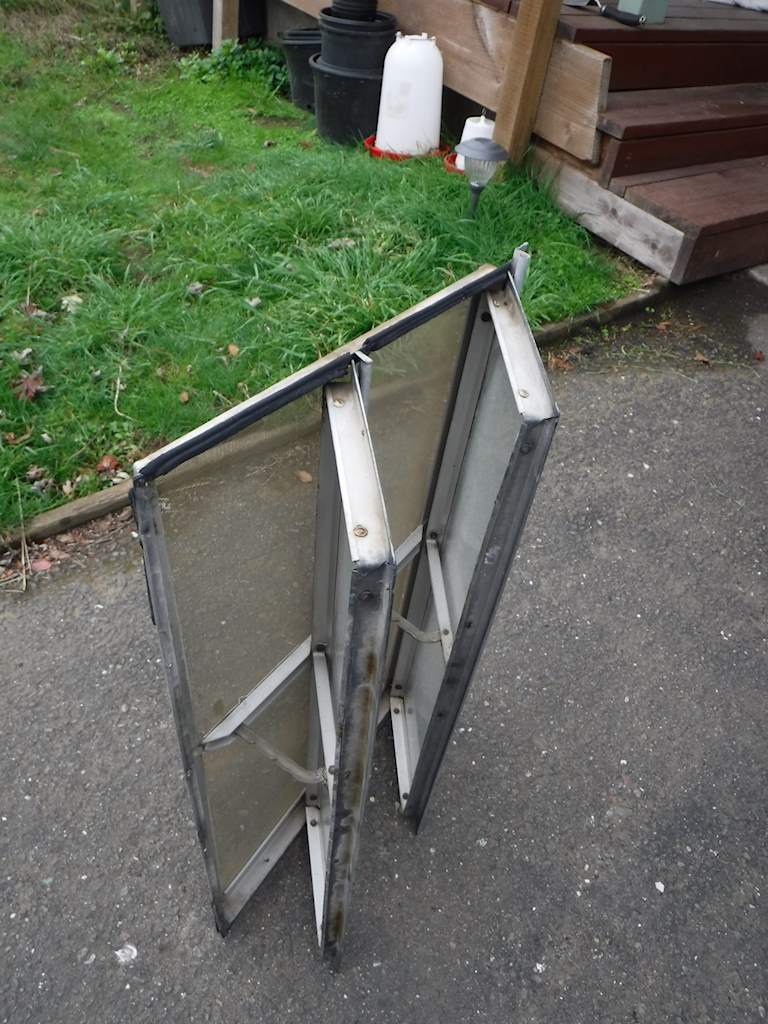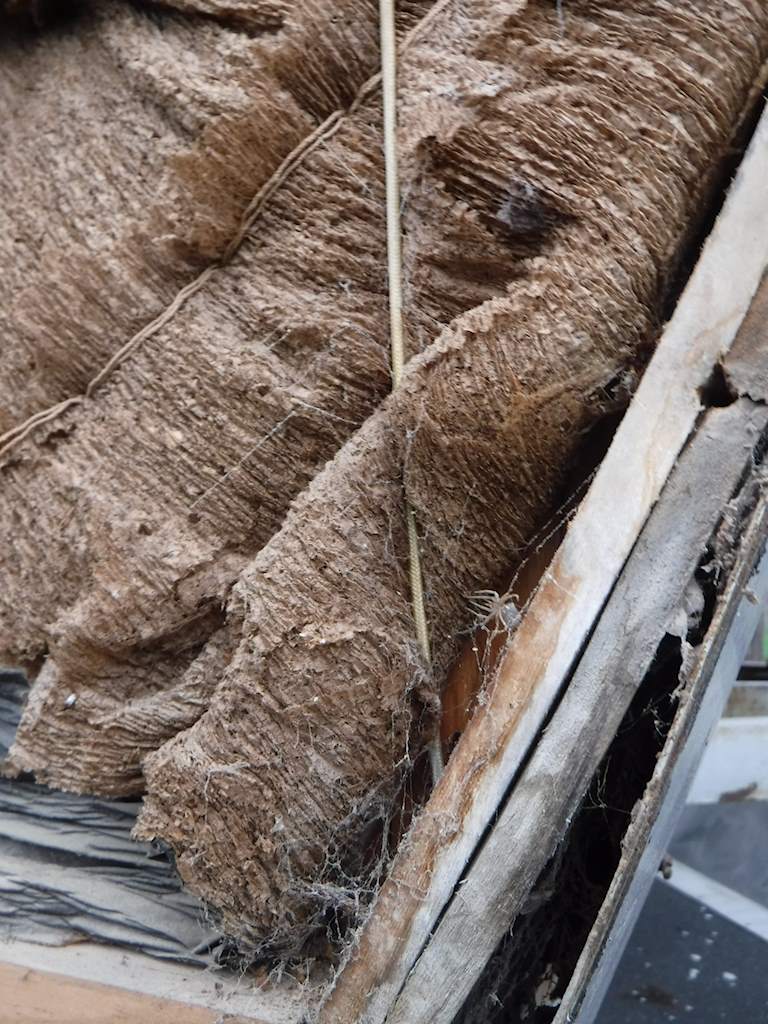Today I finished the screws on the roof. Removed the two roof vents and the corner molding. I left all the nails in place. Nails. Seems they nailed each piece in place except the last overlap or layer.
The right side, where the doors are, has a 1 x 1/2 inch unequal angle covering the corner joint and an extrusion (I don’t know how to describe the cross-section) above that to make the water flow off the ends and not over the doors.
The left side has just the angle. Mostly every overlap has this stuff between, except that some of the roof panels are just metal-to-metal. Crazy- those are the most important joints and they are guaranteed to leak.
I’ve never worked on roofs, but it looks like I imagine tar-impregnated roofing felt would look. It acts more like an adhesive than a sealant. In the second picture above we’re looking at the inside of the one-inch-wide leg of the corner angle. Even after 65 years I had to pry it apart. If I’m right and that’s tar, then at least alchohol should remove it. Would be nice if I can get it off without using any nasty solvents.
The nails come out fairly easily, so next week, after Thanksgiving, I can start removing panels, replacing damaged or rotten wood, adding insulation and running wires, and putting the panels back on. Without nails and with proper butyl tape.


